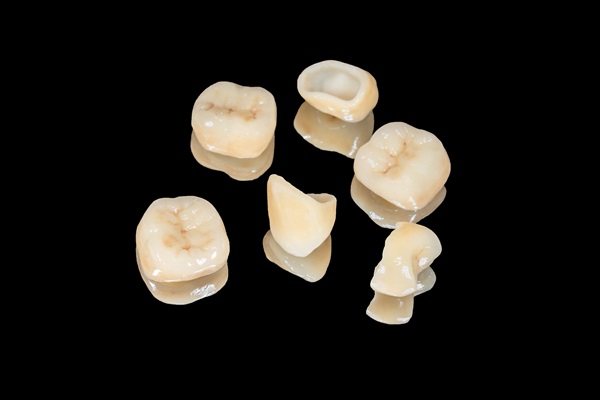What Is a Dental Crown and When Do You Need One?

Curious about dental crowns? Read on to learn more about this type of restoration. If a dentist determines that you need a dental crown, there are several reasons why they may make that suggestion. A crown is a common dental restoration to cover and protect a tooth with compromised structural integrity. Their natural appearance and feel make them a popular choice for aesthetic purposes, too.
What is a dental crown?
The purpose of a dental crown is to cover a badly damaged or decayed tooth. The crown is more like a tooth-shaped cap with a hollow in it. The crown could be placed as a support for a dental bridge or as a cover for dental implants. The material used for dental crowns varies, based on the purpose and position of the tooth. However, the most popular choice is porcelain because it mimics the appearance of natural teeth.
When is a crown necessary?
Some of the most common reasons for recommending dental crowns are:
- Root canals: Root canal treatment is a vital dental procedure to remove diseased or damaged pulp tissue from the interior of a tooth. The pulp chamber is then sealed to avoid more infection or damage. When an infection necessitates a root canal, a cap is often required to protect the tooth from further damage because removing pulp tissue makes it extra brittle.
- Large fillings: Any tooth that needs a large filling or has had many smaller ones may need a crown to protect its structure.
- Cracked tooth: If your tooth is fractured, you may not always need a crown. If the fracture is painful, has a cavity, or requires a root canal, a crown will be necessary.
Crowns are a great cosmetic solution for many problems, including discolored, spaced-out, or misaligned teeth.
Getting a dental crown
While gold and porcelain are the most common materials for dental crowns, other options are available as well. The dental professional will always prioritize the patient’s needs by selecting a material that provides optimal chewing support and has a better appearance.
It usually takes two visits to the dentist's office to get a dental crown. The first step is preparing the tooth for the crown application. During this appointment, the dentist will make a cast of the tooth to fabricate a temporary crown. Before starting, they will apply local anesthetic on the tooth to ensure the patient’s comfort throughout the whole process.
Preparing the tooth for the crown requires slightly smoothing down the surface of the tooth. They will take another impression of the gums and teeth after preparation for the customized permanent crown. In the meantime, they may place a temporary crown to protect the tooth, if needed.
A dental lab will use an imprint of the teeth to make a crown for the patient. This will ensure that the crown fits snugly. During the second appointment, the dentist will take out the temporary crown and test the new crown’s fit and alignment. They will then cement the crown into place.
In conclusion
Proper oral hygiene practices like brushing, flossing, and dental checkups can ensure your crown lasts for as long as possible. To learn more about dental crowns, make an appointment with our dental office. The dentist will address your questions and suggest the proper solution during the consultation.
Request an appointment here: https://www.mysmilecraft.com or call Smile Craft Dental at (650) 241-0284 for an appointment in our Redwood City office.
Check out what others are saying about our dental services on Yelp: Dental Crowns in Redwood City, CA.
Related Posts
Patients with dental implants often have questions about the affixed implant crown. Dental implants are ideal for replacing lost tooth roots, and crowns are crucial for helping you get your desired smile. One common query that dentists deal with is the possibility of replacing the dental crown on the implant.Patients will have a better knowledge…
CEREC® crowns are a great dental restoration option that offers convenience, ease, and efficient results. However, they are still rather new to dentistry, which can cause those that are considering their options to have a lot of questions. CEREC® crowns achieve the same goal as traditional crowns do, but the way the process is executed…
A kid friendly dentist can do much more than performing a routine examination on your child’s teeth and gum. The dentist also provides important restorative care when your son or daughter has a large cavity. Tooth decay can be common among young patients. When this occurs, the child is at risk of losing the tooth.…
3D dental scans are revolutionizing the way dentists diagnose and treat a wide range of oral health conditions. Unlike traditional X-rays, 3D dental scans provide a detailed, three-dimensional view of the teeth, jaw, and surrounding structures, enabling more accurate diagnoses and precise treatment planning. This advanced imaging technology is becoming vital in modern dentistry, enhancing…
